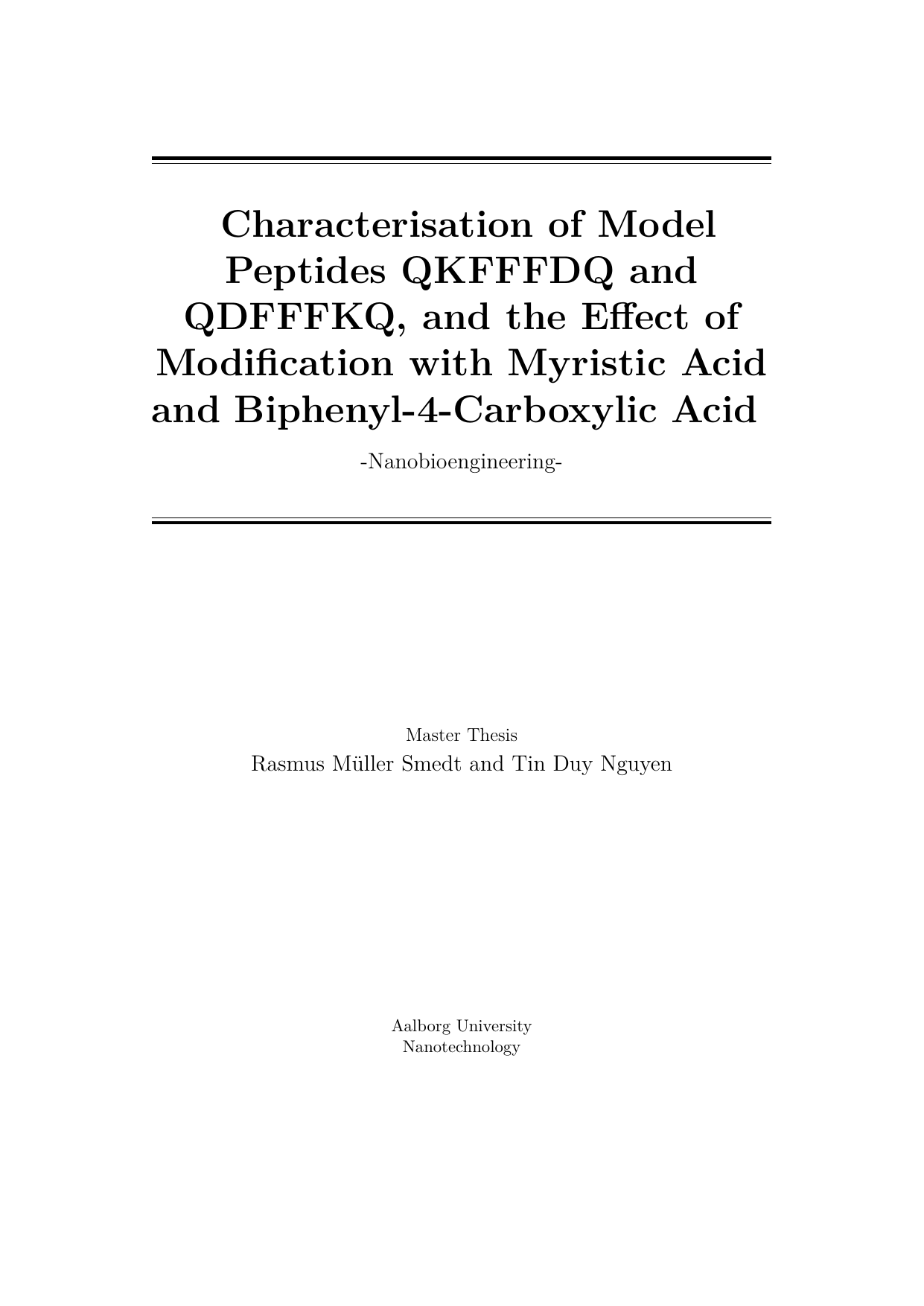
Characterisation of Model Peptides QKFFFDQ and QDFFFKQ, and the Effect of Modification with Myristic Acid and Biphenyl-4-Carboxylic Acid
Authors
Term
4. term
Education
Publication year
2019
Submitted on
2019-06-10
Pages
49
Abstract
Synthetic modification of peptides has gained interest as a way of mitigating the drawbacks of peptide-based drugs, such as the high metabolism of these compounds. The peptides QDFFFKQ and QKFFFDQ, based on the model peptide RFFFR, have been confirmed to fibrillate in polar solvents. The peptides were successfully modified with myristic acid and biphenyl-4-carboxylic acid by in situ carboxylic acid esterification as an extension of standard solid phase peptide synthesis. Circular dichroism and fluorescence measurements indicate that the peptides are stabilised bypi-stacking. AFM measurements show a significant increase in fibrillation propensity for both peptides after modification with myristic acid or biphenyl-4-carboxylic acid. The significant decrease in solubility in aqueous environments after modification could prove detrimental for use in pharmaceutics. As such, less hydrophobic moieties should be investigated.
Synthetic modification of peptides has gained interest as a way of mitigating the drawbacks of peptide-based drugs, such as the high metabolism of these compounds. The peptides QDFFFKQ and QKFFFDQ, based on the model peptide RFFFR, have been confirmed to fibrillate in polar solvents. The peptides were successfully modified with myristic acid and biphenyl-4-carboxylic acid by in situ carboxylic acid esterification as an extension of standard solid phase peptide synthesis. Circular dichroism and fluorescence measurements indicate that the peptides are stabilised bypi-stacking. AFM measurements show a significant increase in fibrillation propensity for both peptides after modification with myristic acid or biphenyl-4-carboxylic acid. The significant decrease in solubility in aqueous environments after modification could prove detrimental for use in pharmaceutics. As such, less hydrophobic moieties should be investigated.
Keywords
Documents
